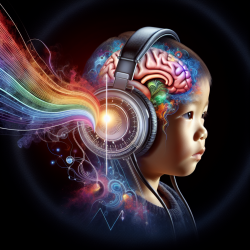Adolescence is a critical period marked by significant emotional and behavioral changes. Understanding how adolescents regulate their emotions in different social contexts can provide valuable insights for practitioners working with this age group. The research article "Emotion Regulation with Parents and Friends and Adolescent Internalizing and Externalizing Behavior" offers a comprehensive look at how emotion regulation strategies impact adolescent behavior.
Understanding Emotion Regulation
Emotion regulation refers to the processes by which individuals influence their emotions, how they experience them, and how they express them. In adolescents, these strategies are crucial as they navigate complex social environments involving parents and peers. The study highlights three primary emotion regulation strategies: cognitive reappraisal, affective suppression, and affective expression.
Cognitive Reappraisal
This strategy involves altering one's interpretation of a situation to change its emotional impact. It is considered an adaptive strategy linked to positive psychosocial outcomes and lower levels of internalizing and externalizing behaviors.
Affective Suppression
A response-focused strategy that involves inhibiting the outward expression of emotions. While it may help manage immediate social interactions, it is often associated with negative self-perceptions and increased internalizing symptoms such as anxiety and depression.
Affective Expression
This involves openly expressing emotions to regulate emotional experiences. Though less studied, it is thought to promote intimacy in friendships and reduce internalizing symptoms when used appropriately.
Key Findings from the Research
- Adolescents who engage more in affective expression with friends report lower internalizing symptoms.
- Cognitive reappraisal with parents is linked to lower externalizing behaviors.
- Affective suppression with friends correlates with higher internalizing symptoms.
- No significant relationship was found between emotion regulation strategies with parents and internalizing behaviors.
The study underscores the importance of context in emotion regulation. Adolescents tend to use different strategies depending on whether they are interacting with parents or friends. This highlights the need for practitioners to consider relational contexts when supporting adolescents in developing effective emotion regulation skills.
Practical Applications for Practitioners
Practitioners can enhance their skills by incorporating these findings into their work:
- Encourage Cognitive Reappraisal: Teach adolescents to reinterpret challenging situations positively, especially in family contexts.
- Foster Affective Expression: Create safe spaces for adolescents to express emotions, particularly within peer groups where they seek support.
- Acknowledge Contextual Differences: Recognize that strategies effective in one context may not be suitable for another, tailoring interventions accordingly.
- Promote Emotional Awareness: Help adolescents become aware of their emotional responses and the impact of different regulation strategies on their well-being.
The study's findings suggest that targeted interventions focusing on context-specific emotion regulation strategies could significantly reduce behavior problems in adolescents. Practitioners are encouraged to explore further research on this topic to refine their approaches and enhance outcomes for youth.
To read the original research paper, please follow this link: Emotion Regulation with Parents and Friends and Adolescent Internalizing and Externalizing Behavior.










